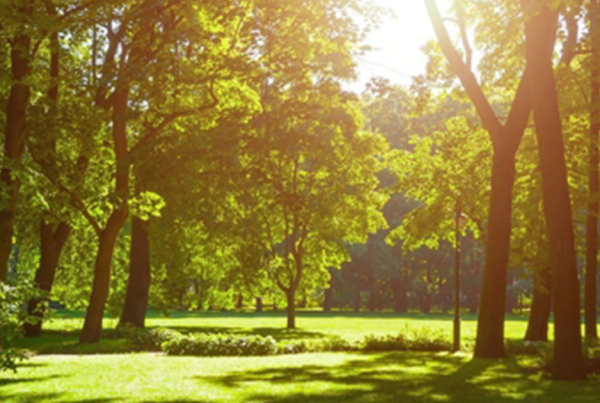
How to Identify Root Rot Before It’s Too Late
If you’re asking, “What does root rot look like?”—you’re already on the right track. Root rot is one of the most damaging and difficult-to-detect tree health issues in California. And while it starts underground in its early stages, this disease doesn’t stay hidden for long. If left untreated, it can weaken your tree’s structure, reduce its lifespan, and even become a safety hazard.
At Image Tree Service, we’ve helped Sonoma County property owners identify and treat root rot for over 25 years. Here’s how to recognize the warning signs and protect your trees before serious damage sets in.
What Is Root Rot?
Root rot is typically caused by soil-borne fungi like Phytophthora, which thrive in wet soil, especially when poorly drained. When tree roots stay saturated too long—due to overwatering, compacted soil, or heavy rains—they begin to decay. This rot prevents the tree from absorbing water and nutrients, eventually leading to decline or death.
If caught early, we can provide treatments to the infected roots so that you can protect the remaining healthy roots.
What Does Root Rot Look Like?
While the infection starts below the soil surface, there are several visible symptoms that may point to root rot:
Wilting or Yellowing Leaves
Wilting leaves may turn yellow or brown even when the tree is getting enough water. They can also appear dry, scorched, or curled around the edges.
Slow or Stunted Growth
Trees affected by root rot often grow more slowly or stop producing healthy new growth altogether, leading to soft roots due to nutrient deficiency, excess soil, and excess water. You may notice fewer leaves, blossoms, or smaller-than-usual branches.
Dieback in the Canopy
One of the more serious signs: branches dying from the tips back toward the trunk. The canopy may look sparse or uneven.
Fungal Growth at the Base
Look for mushrooms, mold, dark roots or other harmful fungi structures around the base of the tree. These are signs of decaying, damaged roots and excess moisture below the surface.
Dark, Mushy Roots (if exposed)
If you’re able to see any roots—due to erosion or excavation—rotted roots will look dark brown, mushy, and may fall apart when touched.
Leaning or Unstable Tree
As the roots decay, they lose their ability to anchor the tree to the root system. If your tree suddenly starts leaning or feels loose in the ground, it could be due to root damage or infected soil.
Why Root Rot Happens in California
Although California is known for dry conditions, root rot is still a serious threat—especially during rainy seasons or when irrigation is mismanaged. In Sonoma County, clay-heavy or compacted soils can trap water around the roots, creating perfect conditions for fungal growth.
Other contributing factors include:
- Overwatering or poorly timed irrigation
- Improper planting depth or placement
- Compacted soil with poor drainage holes
- Contaminated soil
- Stress from drought, heat, or nearby construction
Image Tree Service is equipped to identify root rot, treat root rot, and prevent root rot, so don’t hesitate to reach out to our knowledgeable team.
What To Do If You See the Signs
If you think your potted plants or tree show signs of root rot, don’t wait to start treatment on your plant’s roots. Early detection makes a big difference in maintaining healthy plants. Our ISA-certified arborists at Image Tree Service can inspect the tree, evaluate soil conditions, and confirm whether root rot is present.
Depending on the severity, we may recommend:
- Improving drainage with vertical mulching
- Strengthening the tree with deep root fertilization
- Adjusting irrigation practices and ensuring proper drainage
- In severe cases, safely removing the tree to protect nearby plants
Root rot prevention is very important, especially in California. Be sure to pay attention to your plant’s soil and your plant’s root system so that you don’t end up with the dreaded root rot.
How to Fix Root Rot and Prevent it On Nearby Plants
The best way to prevent root rot and protect your trees is to stay proactive and maintain healthy roots. Regular inspections and proper watering go a long way. You can also:
- Mulch properly to retain soil moisture without suffocating roots
- Avoid planting trees too deep or too close together
- Schedule annual tree health assessments
- Invest in soil care, especially after construction or landscape changes
Trust Sonoma County’s Tree and Plant Health Experts
At Image Tree Service, we’re committed to helping trees stay healthy from the ground up. If you’re unsure about your tree’s condition or want to know what root rot looks like, we’re just a phone call away.
If you think you’ve seen root rot spread, give us a call today so we can help your plant recover. We offer free estimates, flexible payment options, and over two decades of trusted tree service throughout Windsor, Santa Rosa, Healdsburg, and beyond.
Suspect root rot or another plant disease?
Contact us today or request a free consultation online. Let’s protect your trees—starting with healthy roots and fresh soil.















